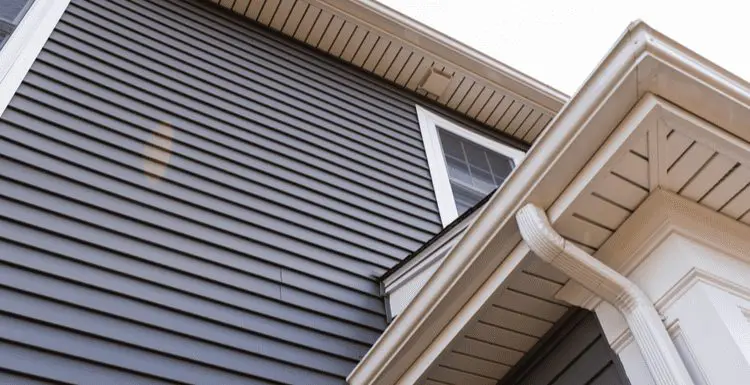Vinyl siding has certainly wormed itself into the hearts of many homeowners since undergoing a myriad of changes over the past few decades.
The fact that there are various types of vinyl siding to choose from today confirms this fact.
In fact, because vinyl is such a versatile material, there are countless styles and types available.
With a good contractor and an open mind, you can easily refresh the look of your home without breaking the bank.
5 Types of Vinyl Siding
Some popular types of siding include horizontal, vertical, and fiber cement.
And you can bet there’s a vinyl product meant to mimic each of these styles.
1. Horizontal Vinyl Siding
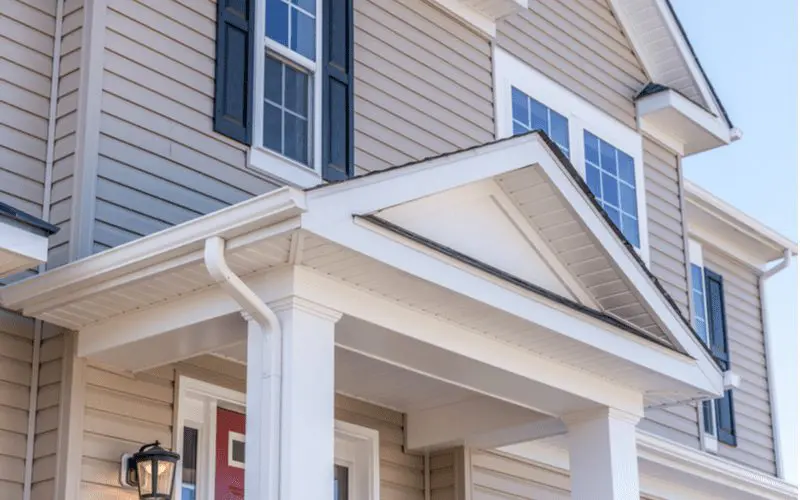
Tokar/Shutterstock
Horizontal vinyl siding is not the most unique or special of all types of vinyl siding.
However, it’s the most popular and sought-after. Given its timeless appearance, we don’t think it’ll become tacky or outdated any time soon.
It also comes in different styles. Some of them are the Dutch Lap, the Traditional Lap, the Beaded, Log-Style, and the Clapboard. While it’s versatile, it’s not without its downsides.
Horizontal vinyl siding is vulnerable to water damage over a long period of time. This is due to the way the panels sit. With a slatted design, there’s naturally more opening, meaning if even one seal gets broken, you can get water in it.
However, compared to wood, it does hold up better.
Vinyl siding is also not vulnerable to mold and splintering. It is also not vulnerable to insects.
Compared to other types of vinyl siding, horizontal vinyl siding is cheaper and easier to install.
- Smooth horizontal vinyl siding. It is designed to look like a freshly painted piece of wood. It is very smooth, and you won’t find a shadow line on it.
- Dutch lap horizontal vinyl siding. Dutch Lap looks like real wood. It has shadow lines on it and clear grooves at its top. These lines are decorative, and the overall look gives the impression that it is handmade.
- Beaded vinyl siding. Beaded horizontal siding is similar to the Dutch lap. However, the difference is the beaded groove it has at its bottom.
2. Vertical Vinyl Siding
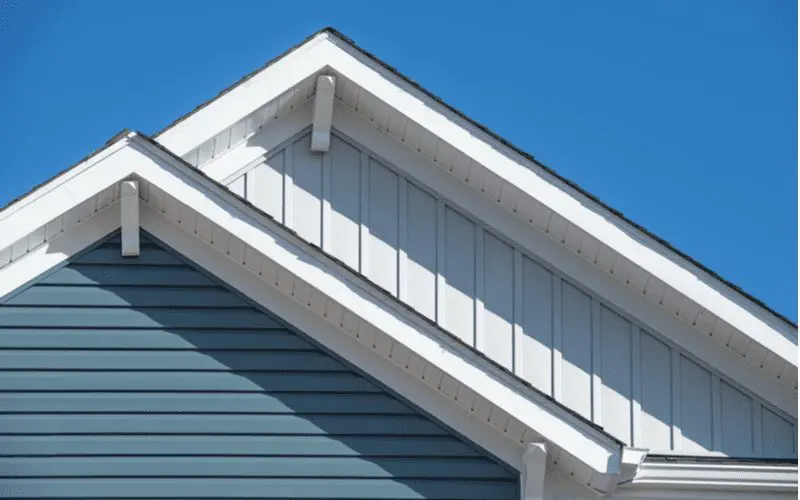
Tokar/Shutterstock
People traditionally used this type of siding for their barns and farms.
However, it has gained a hearty reputation in offices and with homeowners. Vertical vinyl has a batten and board style, with an elegance that many people love.
While it looks nice, it’s not easy to install. This means it’s much more expensive than horizontal siding. But cost aside, it has a lot of advantages.
Some of them are its low maintenance, its look (it resembles real wood), its resistance to moisture and pests, and the fact that you don’t need to paint it.
Vertical vinyl siding also has an adaptive nature, as it is commonly used with other types, like lap siding.
3. Shake
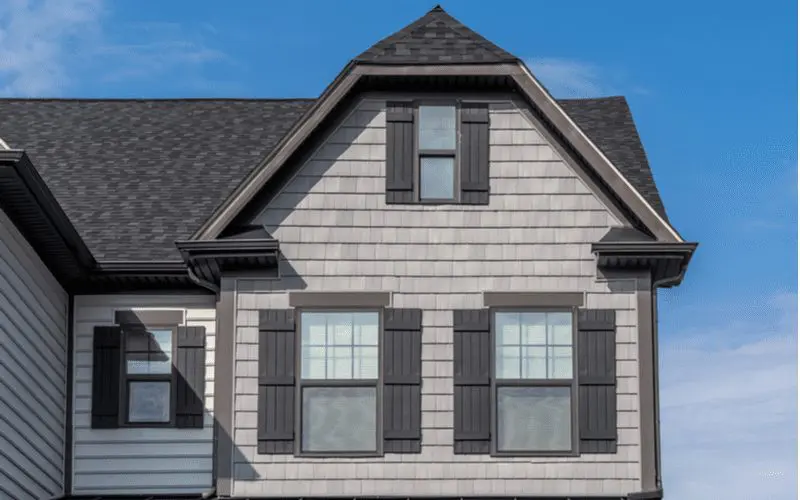
Tokar/Shutterstock
If your home style is colonial or traditional, you know that replacing your siding with real wood is extremely expensive.
This is where vinyl really shines. It’s a viable alternative, since it looks very much like natural wood.
It’s also low-maintenance and affordable. Shake siding comes in large panels, meaning it’s more resistant to the weather, less likely to leak, and still very beautiful. There are two types of shake siding available:
- Straight-edge shake. The bottom edges of this type are straight. They also have a clear shadow line between their shingles.
- Staggered-edge shake. They have a rough bottom with a handmade appearance.
Both types can be used to decorate the whole house or as parts of the entire house.
4. Scallop
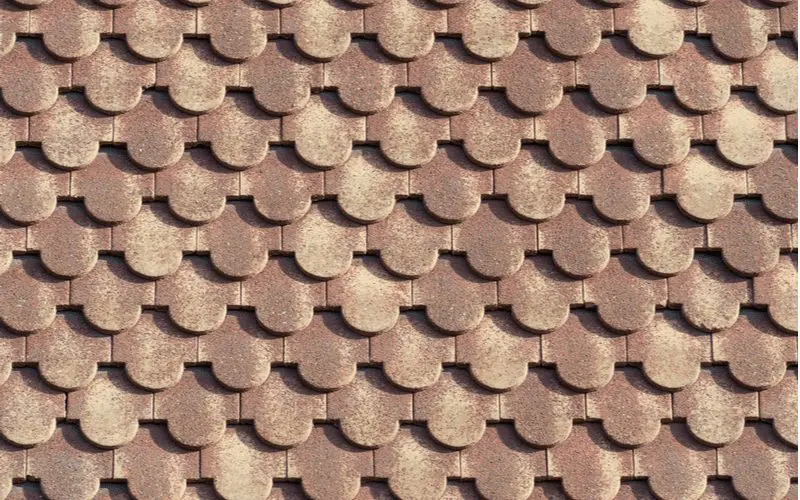
Steve Mann/Shutterstock
People utilize scallop siding as a whole-house decor material, but you can also incorporate it as part of your house decor.
There are several shapes of scallop designs, and each has its appeal, depending on what you want to achieve.
5. Shake and Shingle Vinyl Siding
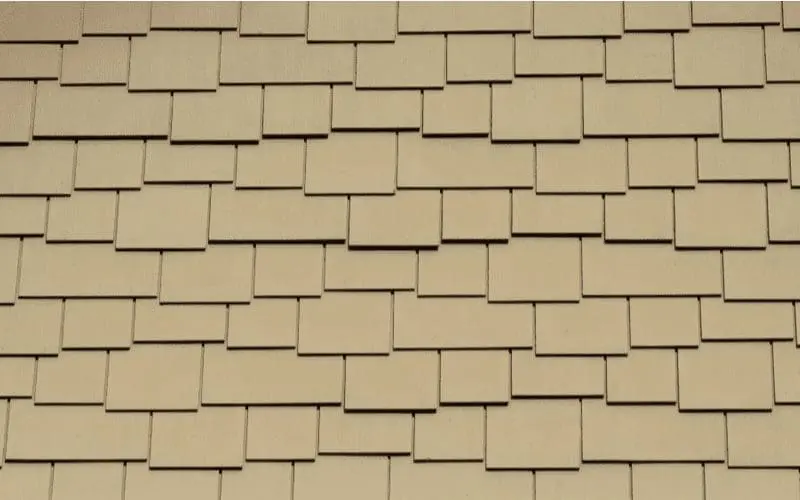
Mal_Media/Shutterstock
If you check out many old homes, you’ll find this type of siding. It has a distinct and charming look.
Shake and Shingle give you the liberty, look, colors, and texture of authentic shake and shingles.
It’s essentially the same as shake but is offset a little more to give the appearance of shingles. Hence the name, shake shingle. This is one of the newest types of vinyl siding to appear in the last decade.
Expect to see this type of vinyl siding on higher-end homes (if replacing wood shake and single siding) and as accents on eaves and peaks.
Why Consider Vinyl Siding
Over the years, vinyl siding has had to fight a winning battle against abandonment.
An independent manufacturing plant introduced it to the market as a replacement for aluminum siding.
However, builders tossed it aside as unusable. The reason for this was that early models buckled, sagged, cracked, and faded very quickly.
And if you’re a builder, that means lots of callbacks. Nowadays, vinyl siding has become extremely popular.
With several technological and chemical upgrades, they are both versatile and reliable. It’s also the most popular, as one-third of American homes use it.
And if its continued popularity is anything to go by, vinyl siding has many years on the market. There are several types of vinyl siding on the market. Each type has its own color and style.
You can choose to combine these various types or stick to one. However, no matter the form you choose, it’s a great way to change the look of your home without breaking the bank.
It Enhances the Home Appeal
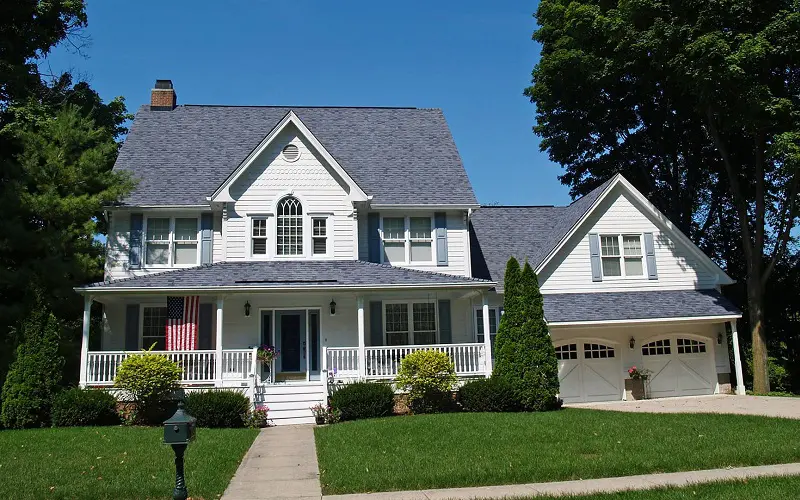
Lindasj22/Shutterstock
Vinyl siding panels are exquisite, no matter where you observe them.
The color also goes all the way through the material. You can rest assured knowing that your siding won’t peel, scratch, or chip.
It Retains Its Color
Vinyl siding is popular for its color-retention qualities. The color goes all the way into and through the material, and it won’t fade over time.
There are Several Designs, Colors, and Accessories
There are countless color and design variations for your home when you use vinyl siding.
You can use the textures, shapes, and designs anywhere in your home and for any part, including windows.
It’s Durable
Vinyl siding is solid and dent-resistant.
The siding can withstand harsh conditions like wind, heat, moisture, and even cold. You know you have an extended warranty with this siding.
It’s Not High Maintenance
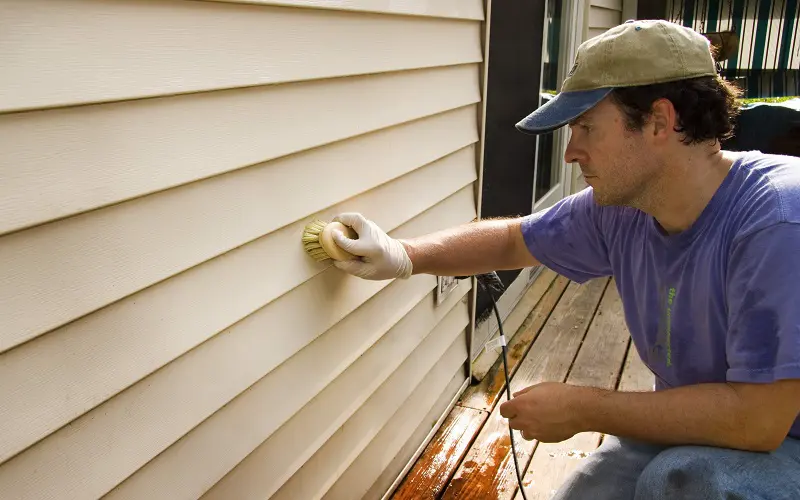
Greg McGill/Shutterstock
It is low-maintenance. You do not need to paint, scrape, or do anything to keep up appearances. You only need to install it, and that’s it.
The only thing you’ll need to do is rinse off the dirt on it, and you can quickly do this with water from your garden hose.
It’s Pest Resistant
Vinyl siding does not allow mold to grow and does not rot. It does this by allowing moisture to escape from it, which prevents infestations.
It’s Eco-friendly
They don’t affect the environment too adversely.
Using vinyl siding instead of other external cladding material leaves an almost insignificant impact on the environment since you can recycle it.
It’s Easy to Install
It is lightweight and has a uniform look, making it very easy to install.
In fact, among other external cladding materials, it is the easiest to install. And when you’re hiring a contractor, time saved means money saved.
It’s a Smart Investment Choice
Many vinyl siding manufacturers offer a lifetime warranty, and it often transfers to the new owner when you sell the home.
For this reason, it’s an easy way to increase curb appeal and reduce overall ownership costs.
Frequently Asked Questions
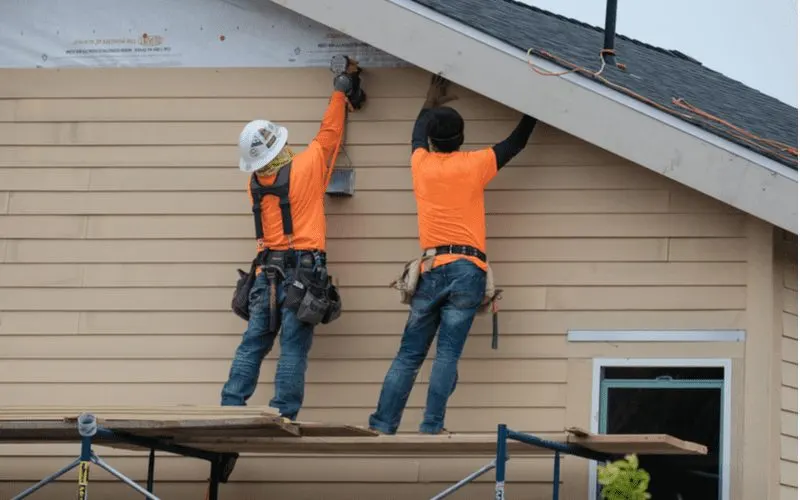
Mediaandrew/Shutterstock
What Is Vinyl Siding?
Vinyl siding is made from polyvinyl chloride resin (PVC resin) and is a material for home decor.
It has two layers. The first one resists ultraviolet rays, while the second layer is a substrate layer for reinforcement.
How Long Does Vinyl Siding Last?
It has a long lifespan, though it is dependent on the specific type of vinyl siding you use and the installation process.
However, it should last about 40 years.
What’s the Required Maintenance Process For Vinyl Siding?
Vinyl siding requires virtually no maintenance. You do not even need to paint it.
However, you can wash it off once a year to remove dust and dirt.
Are There Multiple Designs and Colors For Vinyl Siding?
There are various designs, shapes, and colors from which you can choose. It all depends on what you want.
How Strong Is Vinyl Siding?
It is solid and durable. It can resist harsh weather conditions without any problems.
What’s the Best Type of Vinyl Siding?
Now that you know more about the different types of vinyl siding, you’re one step closer to having an attractive, durable, and low-maintenance home exterior.
Vinyl siding offers you these qualities and more. If you’re on the fence about what type of siding to pick, we think vinyl is a great candidate.

